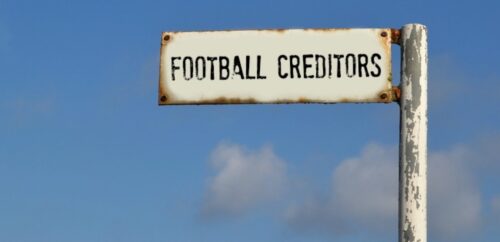What is the football creditors rule?
When a football club from the league faces an insolvency process such as a winding up petition, the directors tend to protect themselves and place the company into administration. Given that, in law, administration is generally a temporary state, there must be an exit – either a sale of its shares or assets to a new buyer. An alternative option is to exit by a CVA.
With administration, an administrator takes over for a period of time, to review options for the business and assess the feasibility of rescue and how best creditors can be repaid. With a CVA, directors remain in control in exchange for reaching a deal with creditors over repayment terms.
Players become preferential creditors and receive a pay out in advance to that for unsecured trade creditors. This is quite the opposite to the usual process where employees (players, in this case) are paid as non-preferential creditors, meaning trade creditors and other parties will be paid first.
Why was the football creditors rule applied to begin with?
The aim of this rule was always to:
- Provide protection for clubs in the lower leagues
- To prevent a domino effect whereby other clubs would not be paid, sparking them also into administration – oh how this could impact the football industry!
How does it work?
When the club proposes a CVA in order to exit administration, the club are suspended from the league until certain “football creditors” are prioritized and paid in full. This includes transfer fees and players wages. Any remaining monies are paid to all other creditors such as trade creditors. Ultimately, due to the high wages paid to players, the non-preferential, unsecured creditors tend to miss out.
Who is classed as a football creditor?
- Players
- Management
- Other clubs
- The Premier League
- HMRC (typically the largest creditor for clubs)
Are there measures in place to protect the interests of unsecured creditors?
Yes. This refers to the introduction of a ‘fit and proper persons’ test to stop directors and managers moving around clubs. If they did move, then they would potentially become a common denominator in insolvency. Therefore, directors are unable to be a controlling shareholder of a club in the league if:
- A club enters administration twice in the period of five years
- A director has been involved with two clubs that have both entered administration within the period of 5 years
There have also been measures in place to stop football clubs being in administration for 18 months of more, or for two consecutive seasons.
Some examples of English clubs entering insolvency procedures? (just a randomly selected handful of many!)
- Wigan Athletic, Doncaster Rovers, Bury – 2020s
- Bolton, Coventry Town, Plymouth – 2010s
- QPR, Darlington, Southampton, Ipswich – 2000s
- Maidstone, Northampton, Crystal Palace – 1990s
- New Brighton, Charlton, Newport – 1980s



